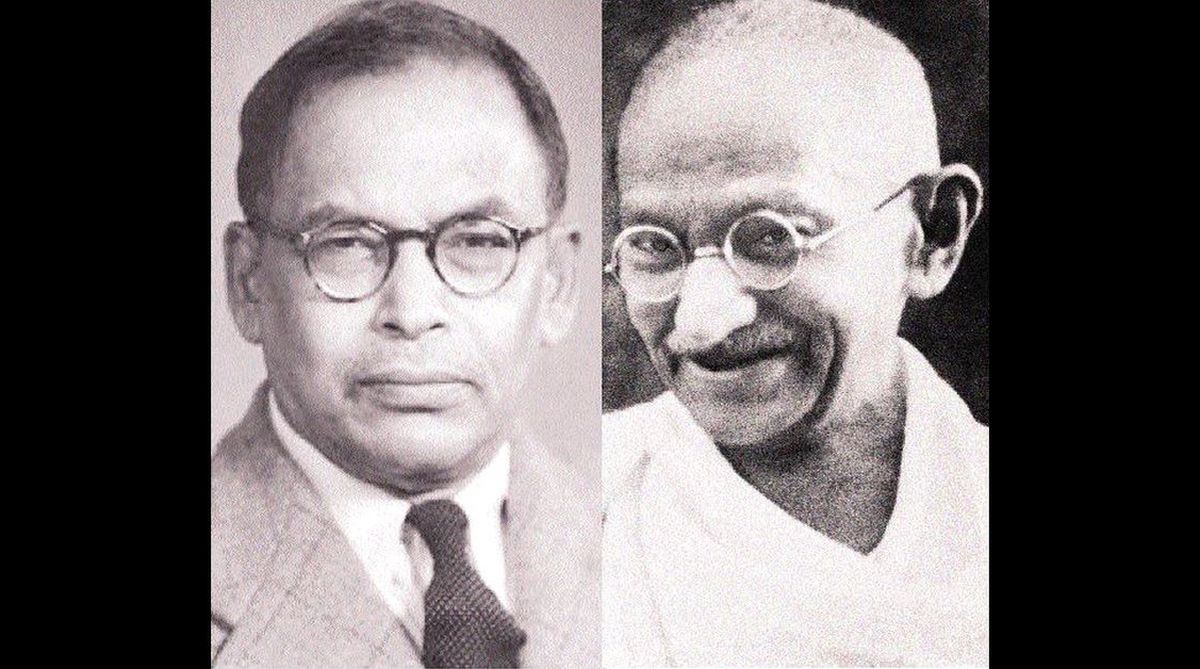What could be common between the three? Guntur has been an important town in coastal Andhra, the district being famous for producing chilli, cotton and tobacco. Gandhiji (1869-1948) has been known as perhaps the greatest Indian after Buddha and is universally respected as an apostle of non-violence. Meghnad Saha (1893-1956), hailing from a poor family of Bengal, rose to be regarded as one of world’s foremost astrophysicists. There is indeed a connection, and that is stellar.
This year marks three important events: the study of the total solar eclipse in Guntur and other places a century and a half ago in 1868 that would ultimately lead to the discovery of Helium; commencement of an year-long celebration preceding the 150th birth anniversary of Gandhiji whose interest in stars and astronomy was hardly known; and Meghnad Saha, born 125 years ago, whose contribution as a scientist, teacher and institution-builder is being remembered by a grateful nation. Thanks to the efforts of Nehru Planetarium, New Delhi and other institutions, the planned celebrations will reinforce our national pride, popularise science and hopefully, foster enlightened discussion on the evolution of scientific research in our country.
Advertisement
Guntur was a municipal town in the nineteenth century when one incident placed it on the world’s scientific calendar. On 18 August 1868, a noted French astronomer, Pierre Janssen, observed a solar prominence during the total solar eclipse and recorded its spectrum from Guntur. Among other British and French astronomers, observing and working in other parts of the world, was Norman Lockyer (founder-editor of the great journal Nature). With crucial inputs from astronomer Pogson, he concluded that the yellow line noticed in the spectrum was caused by a substance found in the Sun.
These observations ultimately resulted in the discovery of Helium – a substance that is rarely found on earth but constitutes about one-fourth of all matter of the universe, the balance three-fourth being Hydrogen (the rest of the elements, all put-together being insignificant). This was a major discovery and Dr Biman B. Nath has shown in his remarkable book The Story of Helium and the Birth of Astrophysics (Springer, 2012) how this exciting discovery also heralded a new discipline of science. The discovery of Helium is associated with Guntur.
Guntur had produced many freedom fighters and had a long association with Gandhiji. He is perceived as a saintly person who had always valued faith more than reason. However, scholars have shown that his opposition to the ways of modern western civilisation did not imply his lack of interest in science and scientists. He was not anti-science and was always appreciative of the great scientists.
Dr. Nandivada Rathnasree, Director of Nehru Planetarium, quotes Gandhiji, “Astronomy has always interested me. Now it has become a passion with me. Every free minute I get, I devote myself to it. It is a wonderful subject…” In fact, two large-sized telescopes placed in the open yard of the Yerwada central prison were used by him. While sending the articles Watching the Heavens I and II to his ashram inmates in 1932, Gandhiji advised them to take up regular observations of the night sky. According to Rathnasree, Gandhiji “combines his view of the celestial objects… with practical instructions for sky observations and even sketches of the Orion constellation.
Following the sketch, he goes on to say that none of the sketches he has seen in print show all the stars which he can see in the constellation and advises ashram inmates to make their own sketches, one reason being…that the constellation as seen from different locations on Earth would have differing orientations…” The “possibility of a measurement of time by looking at the changing position of the Saptarishi asterism” was also raised by him. Gandhiji also desired that lucid books be written on the life of great astronomers and their discoveries. Nehru Planetarium along with other agencies has taken the initiative to highlight Gandhiji’s writings on astronomy and his wonderment at observing stars, through Bapu Khagol Mela starting from this October.
As a lifelong seeker of truth, Gandhiji’s interest in astronomy was genuine and to him it was a deeply spiritual experience. But for Meghnad Saha, the path was different. His was a quest for the hidden laws of nature using the methods of modern science. Like Gandhiji, Saha was also a patriot to the core but wanted modern science and technology to be applied for the benefit of the common man. G. Venkataraman’s book Saha and His Formula (Universities Press, Hyderabad, 1995) chronicles how the fifth child of a poor shopkeeper from a small village of Bengal rose to global fame. Venkataraman observes, “The period 1920-30 may truly be hailed as the golden era of physics in India, for during that decade were made four important discoveries, namely, the Saha ionisation formula, Bose statistics, the Raman effect and the Chandrasekhar limit.”
It is unfortunate that Saha or Bose (or even Gandhiji) did not win the Nobel Prize. But Saha’s thermal ionisation equation, mathematically establishing the relationship between observed spectra of stars and their temperatures, was path-breaking and has remained fundamental to understanding stellar atmosphere. He made the discovery in his mid-twenties.
On Saha’s sixtieth birthday, three years before his early death, great scientists like A.H. Compton, Enrico Fermi, E.O. Lawrence, Harold Urey and Max Born (all Nobel laureates) wrote how his celebrated work had inspired them. Saha’s story, beginning with his fight against poverty, caste prejudice and colonial rule, also highlights under what appalling conditions he and his fellow scientists worked and brought glory to their motherland, such flourish of creativity having not been witnessed thereafter. They were not jail-going patriots, but their contributions were no less significant.
These stories also make us ponder over the state of science in today’s India. Saha wanted the universities to be the epicentre of scientific research and creativity – based on the experience of his formative years. Unfortunately, Saha could not convince the powers that be. His aversion to charkha and khaddar as symbolic of a ‘retrograde and anti-scientific mentality’ did not help him either. Independent India has largely ignored this model of scientific development.
It is time to reassess the role of Gandhiji and Saha in the present context. It should be our national endeavour to enthuse the younger generation in science and mathematics, through intensive popularisation of science and exposition of all students to the basics of physical and biological sciences – highlighting the wonders of science and lives of inspiring scientists. Upon a base so prepared could a truly humane, rational and modern society be built. Compassionate and humane as Gandhiji desired, rational and scientific as Meghnad Saha advocated. Continual celebration of events like the ones discussed will help advance this cause.
The writer is a retired IAS officer
















